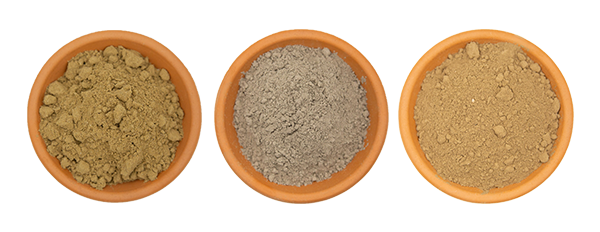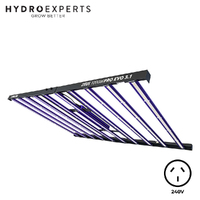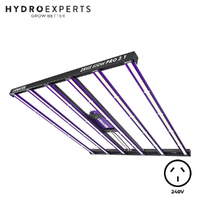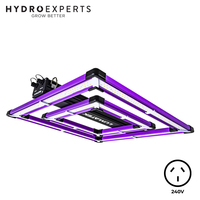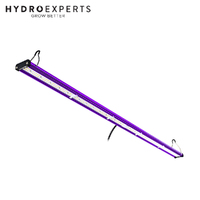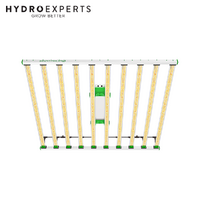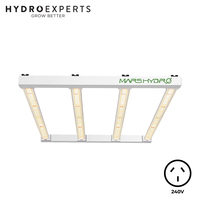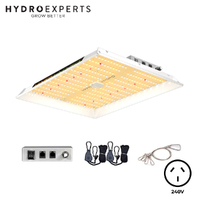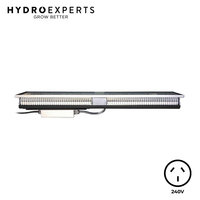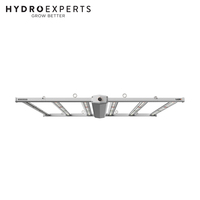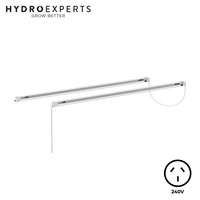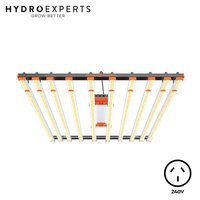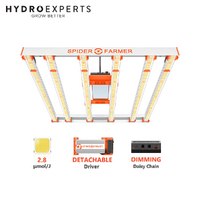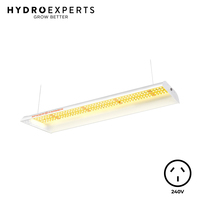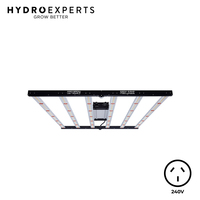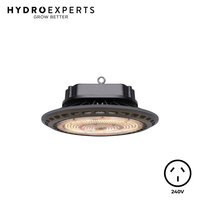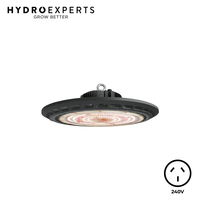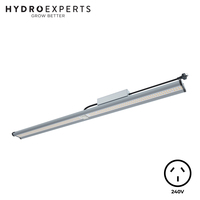LED Diodes for Hydroponic Lighting: A Complete Guide
By Hydro Experts | 11 May 2023
.jpg)
LED diodes are an essential part of hydroponic lighting systems. This guide will help you understand the different types of LED diodes, their functions, and applications in hydroponic systems. We will also explore the major manufacturers of LED diodes and analyse the pros and cons of each type.
What we'll cover in this article
- Introduction to LED Diodes and Hydroponic Lighting
- Understanding the Role of LED Diodes in Hydroponics
- Major Manufacturers of LED Diodes
- Types of LED Diodes for Hydroponic Lighting
- How LED Diodes Operate in Hydroponic Systems
- Comparing Horticultural LEDs
- Key Factors Affecting LED Diode Performance in Hydroponics
- Choosing the Right LED Diodes for Your Hydroponic System
LED Diodes and Their Primary Function in Hydroponics
LED (Light Emitting Diode) diodes are semiconductors that generate light when an electric current is applied. These devices work on the principle of electroluminescence, where a material emits light due to the movement of electrons within its semiconductor structure. In hydroponic systems, LED diodes have emerged as an efficient and effective alternative to traditional lighting sources such as fluorescent and high-pressure sodium lamps.
In hydroponics, LED diodes play a crucial role in plant growth by providing the necessary light spectrum for various life cycle stages. These diodes can be tailored to emit specific wavelengths of light, targeting the absorption peaks of plant pigments like chlorophyll, essential for photosynthesis. Doing so promotes vital processes in plants, such as cell division, growth, and nutrient uptake, without wasting energy on wavelengths that plants don't use effectively.
Additionally,
LED diodes generate far less heat than other lighting options, minimising the risk of heat stress on plants and reducing the need for extensive cooling systems. This reduced heat production is particularly beneficial in hydroponic systems, where maintaining optimal temperature conditions is essential for plant growth and overall system stability.
Another advantage of LED diodes is their long operational lifespan. High-quality LED diodes can last up to 50,000 hours or more, significantly reducing maintenance and replacement costs. This longevity, combined with their energy efficiency and lower heat production, makes LED diodes desirable for hydroponic growers looking to optimise their lighting systems for better plant growth and reduced operational costs.
Major LED Diode Manufacturers
Cree Inc
Founded in 1987, Cree Inc. is an American company known for its innovative LED lighting solutions. They produce high-quality LED diodes using a silicon carbide manufacturing process.
Osram Opto Semiconductors
A German company established in 1906, Osram specialises in developing and manufacturing optoelectronic semiconductors, including LED diodes, using their in-house technologies.
Lumileds
Founded in 1999, Lumileds is a global company specialising in LED diodes and lighting solutions. They manufacture LED diodes using a high-volume manufacturing process, ensuring consistent quality and performance.
Samsung
Samsung, a South Korean multinational conglomerate established in 1938, has expanded its expertise in the LED lighting industry. They produce high-quality LED diodes, including those for horticultural applications, utilising cutting-edge technologies and rigorous manufacturing processes to deliver consistent performance and energy efficiency.
Different Types of LED Diodes
The PAR metric alone doesn't fully capture the efficiency of grow lights, as it considers all photons within the PAR range as photosynthetically active, regardless of whether they're absorbed by the photoreceptors or not. In designing horticultural lighting systems, it's essential to consider spectral efficiency, which measures how well the light's spectrum aligns with the desired action spectrum to stimulate photosynthesis and plant growth. The PAR metric indicates the light quantity, while the light spectrum represents the light quality.
LED grow lights can be divided into full-spectrum and narrow-band lights. Full-spectrum lights imitate the sun's active spectrum and offer a mix of all colours, supporting plants through various growth stages. Narrow-band lights target specific colour bands, providing the energy and information to trigger the desired plant responses. Here are the primary colour bands and their functions in horticultural lighting:
Red light (600-700 nm)
Red light is highly efficient for photosynthesis and influences flowering, dormancy, germination, and other growth aspects. It promotes rooting, budding, flowering, and fruiting, though excessive red light can lead to rapid but weak vertical growth.
Blue light (400-500 nm)
Blue light boosts chlorophyll absorption and photosynthesis but should be carefully balanced with other wavelengths, as too much blue light can hinder growth. It influences stomatal opening, transpiration, and carbon dioxide access. High blue light exposure results in smaller, thicker leaves and greater plant density.
Green light (500-600 nm)
Though less important for photosynthesis, green light can penetrate deeper into the plant canopy and optimiseoptimise stomatal aperture, among other physiological benefits. Adding green light to a red and blue mix produces white light, allowing for easier crop assessment.
Far red light (700-800 nm)
Far-red light affects flowering time and can contribute to faster plant biomass development and larger blossoms. It also influences stem and petiole elongation.
UV-A (320-400 nm) and UV-B (280-320 nm)
Although excessive UV light can damage molecules and DNA structure, moderate exposure can increase stress tolerance and protective mechanisms in plants. UV-A affects cryptochromes and phototropins, while UV-B impacts the UVR8 photoreceptor.
Comparing Horticultural LEDs
Cree's horticultural LED's
provide an unparalleled blend of optical control, light output, photon efficacy, and the renowned ceramic high-power LED reliability that Cree is known for. These LEDs are available in royal blue (450 nm), photo red (660 nm), far-red (730 nm), and full-spectrum white (4000 K).
Lumileds LUXEON SunPlus Series
Designed to emit precise wavelengths of light that align with the chlorophyll absorption peaks, promoting intense photosynthesis, increased yield, improved crop quality, and consistent growth. The SunPlus Series offers options for single-driver solutions and multi-channel, colour-tunable solutions.
Osram's OSCONIQ and OSLON horticultural LEDs
facilitate easy and efficient design for professional top-lighting, inter-lighting, and multi-layer applications. These LEDs come in highly reliable packages with extended lifespans and high corrosion resistance, ensuring durability even in humid environments.
Samsung's mid-power full-spectrum white LEDs
Offer an impressive photon efficacy of 3.03 μmol/J. The use of flip-chip technology eliminates the potential issue of lead frame corrosion, while an enhanced thermal design ensures excellent maintenance of Photosynthetic Photon Flux (PPF).
Key Factors Affecting LED Diode Performance in Hydroponics
In hydroponic systems, optimising LED lighting plays a significant role in ensuring healthy and productive plant growth. To achieve this, it's essential to understand the key factors that affect LED diode performance. Let's dive in to the primary factors
Wavelength
The specific wavelengths of light emitted by the LED diodes are crucial for stimulating photosynthesis and other growth processes in plants. Different plants may require different wavelengths during various growth stages, so it's essential to choose LEDs that provide the appropriate spectral output.
Intensity
Light intensity, measured in photosynthetic photon flux density (PPFD), impacts plant growth and development. Choosing LED diodes with the proper intensity ensures that plants receive adequate light energy for photosynthesis and other metabolic processes.
Light Uniformity
Even distribution of light across the plant canopy is essential for consistent and healthy growth. High-quality LED diodes and well-designed lighting systems help maintain uniform light distribution, minimising the risk of uneven development or underexposed areas.
Energy Efficiency
The energy efficiency of LED diodes directly influences the operational costs of a hydroponic system. More energy-efficient diodes consume less electricity, reducing energy bills and the system's overall environmental impact.
Lifespan
The operational lifespan of LED diodes affects the long-term costs and maintenance requirements of a hydroponic system. High-quality LEDs typically have a longer lifespan, resulting in fewer replacements and lower maintenance costs.
Heat Generation
Excess heat produced by LED diodes can impact the temperature within the hydroponic system, potentially causing heat stress in plants. LED diodes with lower heat generation help maintain optimal temperature conditions and reduce the need for additional cooling solutions.
Reliability and Durability
The reliability and durability of LED diodes are vital in maintaining consistent lighting conditions and minimising potential disruptions to the hydroponic system. High-quality LED diodes are typically more robust and corrosion-resistant, ensuring long-lasting performance even in humid environments.
Customisability
The ability to customise the LED diode's light spectrum, intensity, and other factors can enhance their performance in hydroponic systems. Some LED diodes offer adjustable spectral output and intensity, allowing growers to tailor the lighting conditions to the specific needs of their plants and growth stages.

